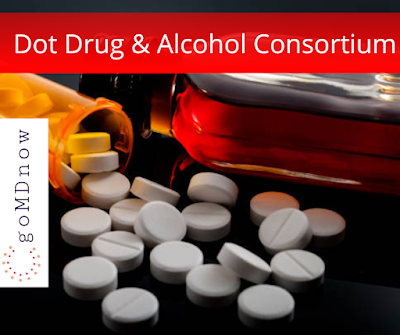Why Drug and Alcohol Testing Matters?
Drug and Alcohol Testing
The goMDnow for a
Drug-Free Workplace reports that more than 74 percent of illegal drug users are
employed. These intoxicated workers are responsible for about 40% of industrial
deaths in the United States. Among other factors, this highlights the
importance of drug and alcohol testing -- especially in the workplace.
Why is drug
testing important?
DOT Drug testing
programs are intended to detect illegal drugs, certain prescription drugs, and
alcohol. Tests can:
• Helping employees admit or admit to substance abuse
problems
• Identifying signs and symptoms of substance abuse and
addiction to provide early intervention and help prevent accidents
• Protect the company's employees, safety and finances
• Protect others from substance use and abuse
• Support patients through recovery by helping them take
responsibility to prevent relapse
Drug testing
helps protect the health of employees battling substance abuse. Testing also
helps deter people from abusing drugs; most people don't want to risk losing
their jobs because of a positive drug test.
Drug Testing
Program
There are no universal standards for the clinical use of
drug and alcohol testing, monitoring, diagnosis, or continuum of care. The
American Association for the Drugs of Addiction acknowledges that this creates
a gap in clinical practice.
Even without standardization, various types of drug testing
can be performed effectively at home, at work, or at school. At-home or remote
testing may not always be feasible due to limited access to mail-in labs that
process remote samples, but that is changing. More labs are expanding their
services to include analysis of remote sample samples.
The most common types of
alcohol and drug tests are saliva, urine, and sometimes blood tests.
Blood tests provide more accurate and reliable results.
That's because blood tests reveal more specific information about drug and
alcohol concentration levels, among other data. This is also because, unlike
urine, blood samples are more difficult to contaminate or thinned.
For blood collection, patients can self-collect a sample at
home using a special remote device and send it to a laboratory for testing.
They can receive remote equipment from some drug and alcohol treatment
facilities that can provide them with home specimen collection kits.
Identifying Relapses
in Addiction Recovery
Many rehabilitation programs use routine drug and alcohol testing to identify
relapses. This early identification facilitates early intervention to help
patients get back on track. Such programs provide effective treatment plans for
inpatient, outpatient, and aftercare support programs. Accountability through
routine testing is essential to help prevent relapse and ensure abstinence and
sobriety for patients in the program.
In some "Board & Care" or "Sober
Living" programs, ex-addicts remain in abstinence through routine drug
testing. If a patient fails a drug test
due to a relapse, they lose their privilege to live at the facility. This is
one way that regular testing helps addicts commit to treatment over the long
term and stick to the program.




Comments
Post a Comment